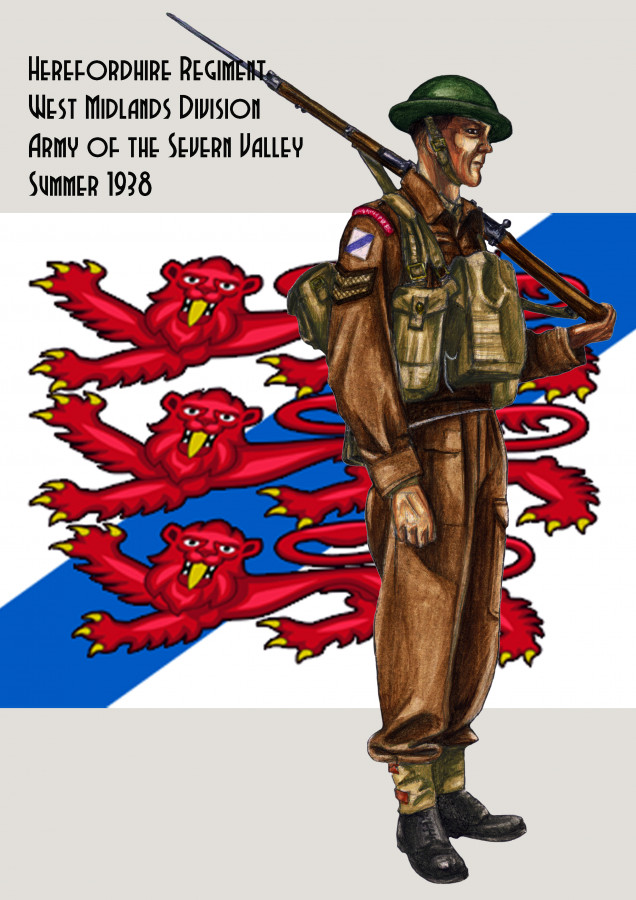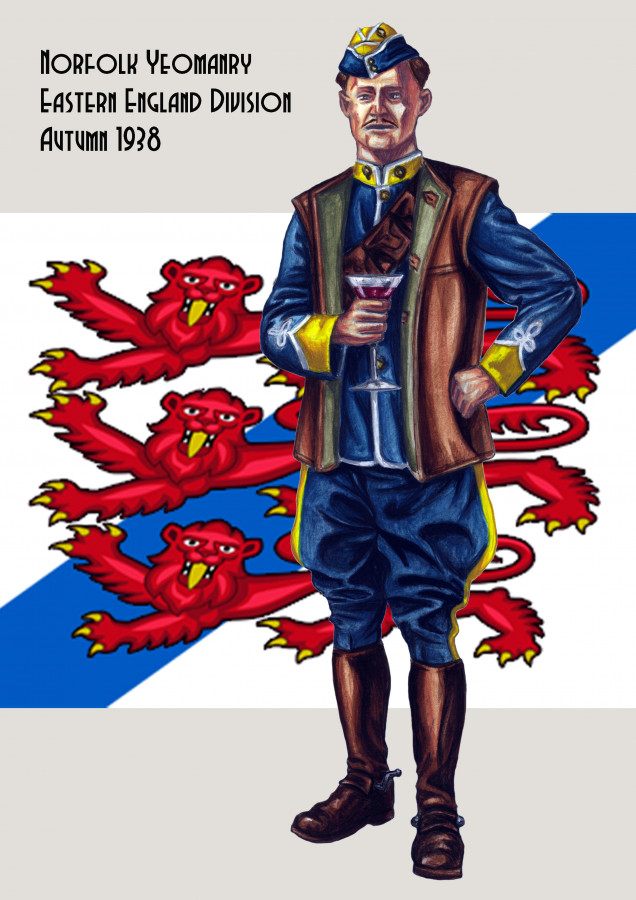
PanzerKaput's Illustrations
Royalist Armies Part One
Continuing with my journey into 1938 A Very British Civil War I am doing a two part article on the Royalist forces and the armies of King Edward VIII.
The Royalist Armies of King Edward VIII
Despite being in theory Commander-in-Chief of the Armed Forces of the United Kingdom and the Empire, the resources King Edward VIII can draw on are very limited and severely stretched by the crisis. There are in reality two principle Royal armies, The Northern Army and the Army of the Severn Valley. In addition, there are concentrations of Royal units in London, Devon, Cornwall and the East Midlands amongst other places.
The actually British Army has begun a process of modernisation in the mid-thirties, but it is by no means complete by the time the civil war broke out. Thus some but not all of the Regular units have the new Bren gun, whilst most Territorial units still carry the Lewis gun. Heavy support may be supplied by the 3 inch Stokes mortar or the newly issued Ordinance ML, Mortar Launcher and by the eighteen pounder field gun. The civil war has seen the process of mechanisation slow down and whilst the armoured cars and tanks are available to the Royalist forces, the terrain and style of warfare means that the cavalry regiments are just as likely to use horses.
The Army of the Severn Valley
The Army of the Severn valley consists of a number of Regular units including elements of the Grenadier and Coldstream Guards, the Life-Guards and the Royal Horse Guards. Also there is a Gurkha battalion, the King’s Troop of the Royal Horse Artillery and a part of the Royal Tank Corp. In addition the king’s advisors, Lord Cirencester, Duke of Montfort and the Earl of Glamorgan have mobilised loyal Territorial and militia forces from Shrewsbury down to Bristol as well as raising volunteer companies including cadet forces for Eton and Harrow.
The Royal Guard Division
Most of the elite units held in reserve around Worcester, Malvern and the King’s court at Madresfield House. It was these formations that effectively checked the Anglican League and eventually drove back the People’s Assault Columns during the first Severn Valley campaign.
Edward’s Guard regiments have become the model of military professionalism in the civil war and are regarded as elite troops of terms of morale and ability. That having been said the Household Cavalry do show a disturbing habit of “going Balaclava” when serving on horseback.
The Welsh Border Division
On the Welsh Borders there are four main concentrations of Royalist forces, to the south the Earl of Glamorgan has the mission of trying to retrieve stocks of coal from the South Wales pits. Around Hereford, the British Union of Fascists and local militias pursue the remnants of the former Bishop of Hereford’s Anglican League forces now established in the diocese of Archenfield. At Ludlow a force of German volunteers under the Duke of Brunswick, contain Welsh raids and in the north an independent Royalist state centred around Shrewsbury, guards against the Socialist advances from Staffordshire and the northern routes used by the Welsh Nationalists.
West Midlands Division
Major-General Sir Michael Greystoke commands the line from Ironbridge to Warwick with a mixed brigade of Regulars brought up to strength with Territorial reserves and volunteers. The main threat here comes from the Socialist League cities Birmingham and the East Midlands.
Southern Division
The first and second Independent Brigades commanded by Duke of Montfort and Lord Cirencester respectively, are the largest formations on the Southern Front. Montfort controls the vital port of Bristol and Gloucester as well as Cheltenham. Cirencester is based at Worcester and has a fairly mobile force capable of plugging gaps and going on the offensive.































![TerrainFest 2024 Begins! Build Terrain With OnTableTop & Win A £300 Prize! [Extended!]](https://images.beastsofwar.com/2024/10/TerrainFEST-2024-Social-Media-Post-Square-225-127.jpg)












































Leave a Reply